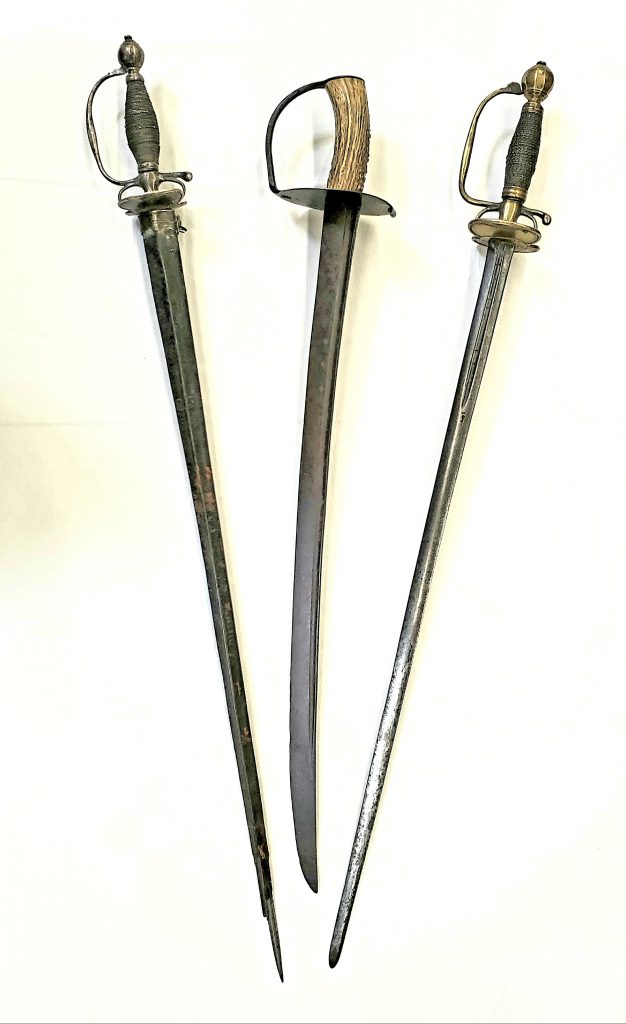As a historian fixated on the start of the American Revolution, I am frequently asked what types of swords I have found that have a provenance to April 19, 1775.
When I was young, I had all sorts of ideas on what they might have been from watching movies and TV shows. As I got older and started my material culture study and searches it soon became apparent that there were a few forms used but one stood out as the most common. The smallsword.
These swords saw use during the 17th century in Europe and evolved slightly into the early-to-mid 18th century. The hilt is small and simple but graceful in form with a wire-wrapped wooden grip, ball-shaped pommel, D-shaped knuckle bow, and a double shell-shaped counterguard. The hilt can be steel, brass, and the nicest quality are silver. These swords had been popular amongst gentlemen as well as militia officers during the French & Indian war and that had not changed on the eve of the Revolution. Some obviously saw earlier use based on their earlier characteristics and may have been passed down from father to son.

One in particular that stands out is the steel-hilted sword carried by Captain Isaac Davis at the North Bridge in Concord. His company was in the lead of the minute men and militia on the morning of the 19th. After a warning volley was fired by the British at the approaching Provincials a second volley was fired and Davis was hit in the chest and killed instantly. As he fell, his sheathed small sword blade broke on a stone wall next to him. The sword was saved and now is in the collection of the Acton Memorial Library.
While at a conference another collector friend asked me about my interests. When I started to babble he cut me short and told me he had a sword carried by an officer who was killed on the 19th in the Cambridge village of Menotomy. Obviously, I was eager to see it and it was of a different form similar to a sea service cutlass. While the overwhelming majority are small swords it was wonderful to see another example of a cheap and functional sword carried that day. As I keep searching, I am sure I will find some other variety of sword or hanger, but I don’t think they will ever surpass the smallsword as the most common sword carried by officers when the war began and after.




